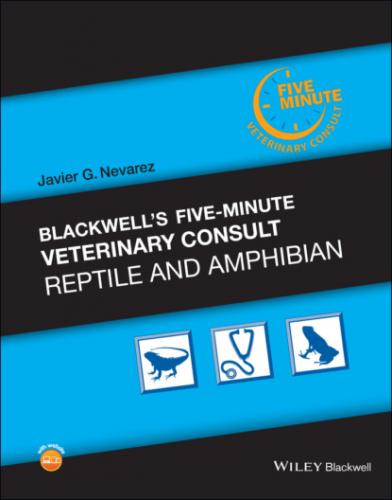Various age groups have been shown to be susceptible to ranavirus infection, although there may be some indication that juveniles are more susceptible to disease.
Outbreaks are often associated with translocations, mixing of animals with unknown health status, or transport in the pet trade.
The majority of viral strains detected in reptiles have been closely related to amphibian ranaviruses, and multiple studies have indicated that many of these viruses can switch between a wide range of ectothermic hosts.
CLINICAL PRESENTATION
In chelonians, signs include ulcerative stomatitis, conjunctivitis, and nasal discharge.
Subcutaneous cervical edema and erythema may also occur.
Infected animals become lethargic and anorexic and may die acutely.
Infection can cause hepatitis, enteritis, and pneumonia.
Dermatitis has been described in some cases.
RISK FACTORS
Husbandry
Close contact with infected amphibians, many of which can be inapparent carriers, can lead to virus transmission.
Contaminated water can also lead to transmission.
Ranaviruses do not replicate at high temperatures, so keeping animals at low temperatures may increase the risk of infection.
Others
N/A
DIFFERENTIAL DIAGNOSIS
Herpesvirus infections
Bacterial and/or fungal infections
DIAGNOSTICS
Virus detection
In the United States, all the ranaviruses described in reptiles to date have been genetically closely related, and a highly sensitive real‐time PCR is available for their detection.
In other parts of the world, ranaviruses found in reptiles have been more genetically diverse, and PCRs capable of detecting these should be used.
These viruses can also be relatively easily isolated in cell culture.
Oral and cloacal swabs have been used to detect ranaviruses, as has blood, more invasive samples (tail clips, tissue biopsies) may be more sensitive.
The liver and kidneys should also be tested if possible.
Serology
An ELISA has been described for the detection of antibodies against ranaviruses in chelonians, although this is not widely commercially available.
PATHOLOGICAL FINDINGS
Chelonians with ranavirus infections have been described with hepatitis, enteritis, and pneumonia.
Vasculitis and formation of thrombi in various organs has also been described.
In some, but not all, cases, infection may be associated with basophilic intracytoplasmic inclusions in in affected cells, especially hepatocytes and epithelial cells of the upper gastrointestinal tract.
APPROPRIATE HEALTH CARE
There is no specific treatment available for iridovirus infections in reptiles.
All viruses in this family replicate at temperatures below 32 degrees C (89.6 degrees F), and environmental temperature has been shown to influence the pathogenicity of ranaviruses in turtles.
It is, however, important to keep the POTZ of the affected species in mind when adjusting environmental temperature.
NUTRITIONAL SUPPORT
N/A
CLIENT EDUCATION/HUSBANDRY RECOMMENDATIONS
Ranaviruses can be transmitted between various ectothermic vertebrate classes, and care should be taken not to mix species.
Quarantine procedures for all ectothermic vertebrates in a collection should include testing for ranaviruses.
Since wild reptiles and amphibians can be infected, and ranaviruses may survive for some time in the environment, especially under cold conditions, introduction of virus into a collection via the environment (e.g., water, soil) should be avoided.
Conversely, in the case of an outbreak, special care should be taken to avoid contamination of the environment. All water and substrate that comes into contact with infected animals should be disinfected before it is disposed of, as should all husbandry items.
Carcasses from dead animals should be disposed of appropriately, ensuring that they do not come in contact with other animals.
Since ectoparasites may play a role in the transmission of various iridoviruses, effective measures for parasite control should be implemented.
DRUG(S) OF CHOICE
N/A
PRECAUTIONS/INTERACTIONS
Ranaviruses appear to be very infectious in chelonians, and affected animals should be barrier nursed.
Viruses can cross species and class barriers, so contact with any other ectothermic vertebrates should be avoided.
In has been suggested that ranaviruses may be transmitted by hematophagous invertebrates, so control of mosquito populations may be helpful.
PATIENT MONITORING
The time to development of disease in contact animals can vary depending on the route of infection, amount of infectious material, virus strain and host species, so monitoring should be continued for several weeks to months in an affected collection.
Surviving infected animals can become carriers.
EXPECTED COURSE AND PROGNOSIS
Morbidity is usually very high, although recovery from infection has been described.
Surviving animals may remain carriers and should be kept separate from susceptible animals including reptiles, amphibians, and fish.
